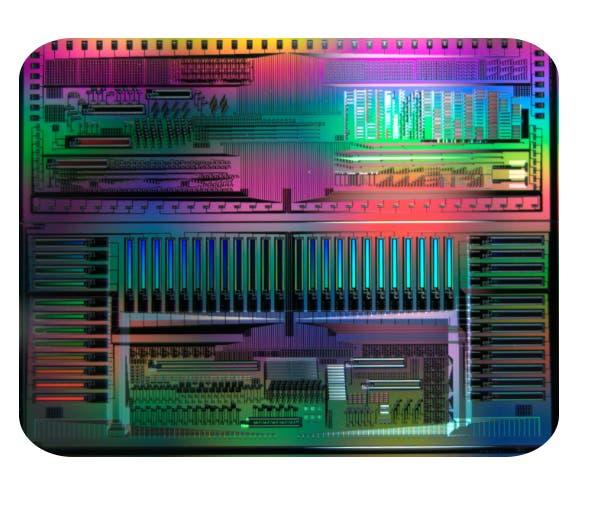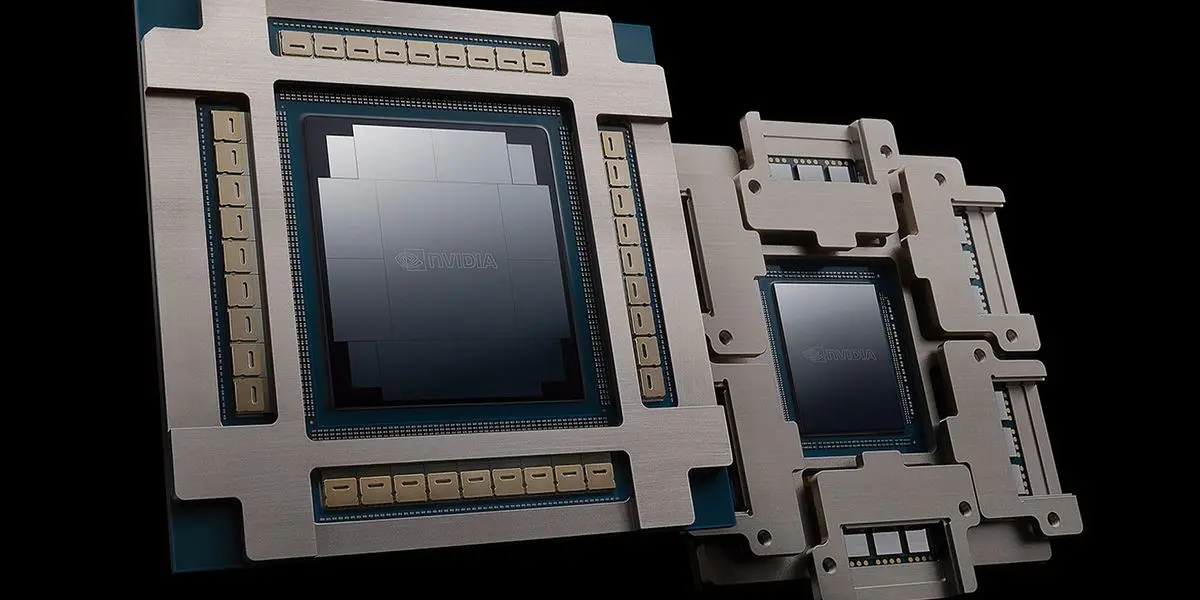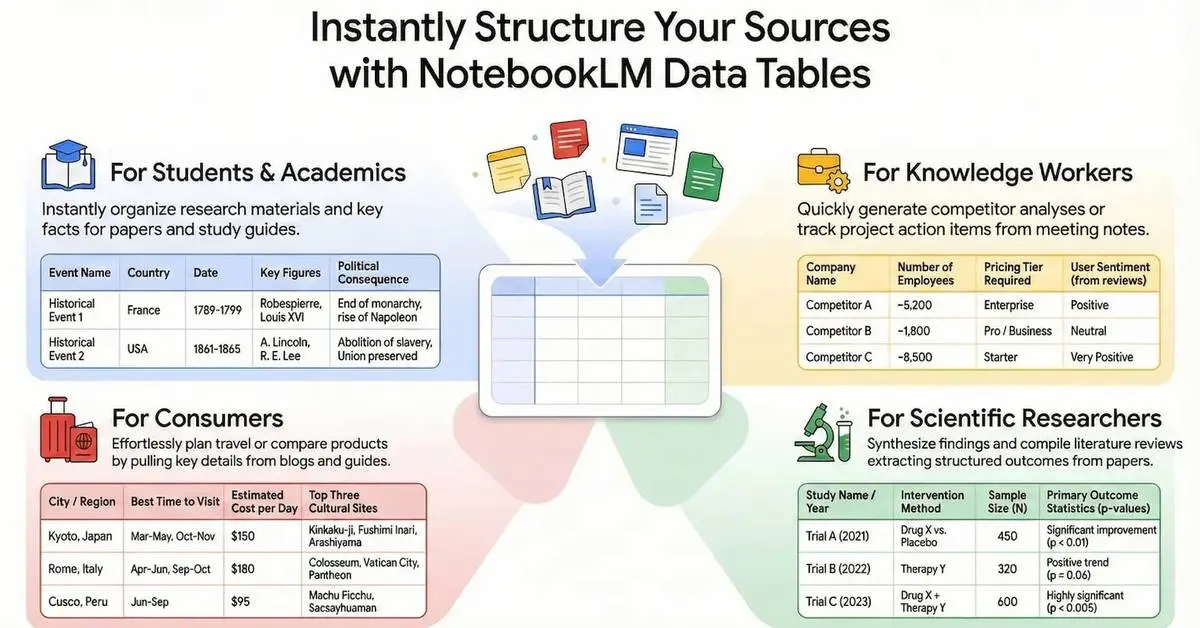AMD Acquires Enosemi to Boost AI Capabilities with Silicon Photonics Technology
8 Sources
8 Sources
[1]
AMD buys silicon photonics startup Enosemi to fuel its AI ambitions | TechCrunch
AMD has acquired Enosemi, a startup designing custom materials to support silicon photonics product development. The terms of the deal, announced Wednesday, weren't disclosed. Silicon photonics uses light -- photons -- to transmit data, offering a faster and more efficient alternative to traditional electrical communication. AMD and other chipmakers have shown an increasing interest in the tech. Late last year, AMD reportedly teamed up with several Taiwan startups for a silicon photonics R&D collaboration. AMD says that its acquisition of Enosemi will "accelerate [its] co-packaged optics innovation for AI systems." "As AI models grow larger and more complex, the need for faster, more efficient data movement is accelerating," Brian Armick, SVP of tech and engineering at AMD, wrote in a blog post. "Enosemi has collaborated with us as an external development partner on photonics, and this acquisition extends that successful relationship. Now, as part of AMD, the team will help us immediately scale our ability to support and develop a variety of photonics and co-packaged optics solutions across next-gen AI systems." Enosemi, based in Silicon Valley, builds and ships photonic integrated circuits -- microchips containing two or more photonic components that form a functioning circuit. Founded in 2023 by Ari Novack and Matthew Streshinsky, both of whom have a background in semiconductor engineering, Enosemi offers products including optical interconnects, which integrate computing and networking components inside a data center. Prior to its exit, Enosemi raised $150,000 in VC funding from backers including New Mexico Vintage Fund. The company had 16 employees as of May, according to Pitchbook. Novack's LinkedIn profile now lists him as a silicon design engineering fellow at AMD. Enosemi is AMD's first acquisition following the company's massive deal to buy ZT Systems, for which the former originally paid around $4.9 billion. (AMD reached an agreement to sell ZT Systems' server-manufacturing business for $3 billion earlier this month.) The company is doubling down on its AI investments; in 2024, AMD's AI chip revenue reached $5 billion, CEO Lisa Su said during an earnings call in February.
[2]
AMD acquires Enosemi to enter photonics race -- chasing Nvidia into light-based interconnect tech
AMD's latest acquisition sees it stepping into the presumed future of chipmaking AMD is looking to strengthen its position in the race against Nvidia with a new acquisition. The company purchased Enosemi, a company developing photonic integrated circuits. Silicon photonics is seen as a crucial next step into the next era of computing, with many leading tech companies and fabs making steps into photonics over the past year. Enosemi is a Silicon Valley-based company that has worked with AMD and companies like GlobalFoundries to license, build, and ship photonic integrated circuit IP since 2023. A blog post from AMD SVP Brian Amick claims that the Enosemi team "will help [AMD] immediately scale our ability to support and develop a variety of photonics and co-packaged optics solutions across next-gen AI systems." Photonics refers to a newer technology in semiconductors, based on the use of light rather than electrons to send information. Photonics has already been deployed in network switches, inter-chiplet interconnects, and a host of other applications to assist and one day perhaps replace electronic integrated circuits. Light-based ICs have higher speeds, more bandwidth, and better power efficiency than electronic ICs, making them a highly attractive new frontier in chip design. AMD's move to acquire a leading photonics firm like Enosemi shows a commitment to matching Nvidia's own push into photonics. Nvidia has already released a 400 TB/s network switch platform built on silicon photonics for the datacenter, with more plans to incorporate the tech into its stack of AI solutions. In AMD's press release for the acquisition, the company shares, "This acquisition strengthens AMD's position as a provider of full-stack AI solutions, combining its leading CPUs, GPUs, and adaptive SoCs with enhanced networking, software, and system integration expertise." AMD's goal of becoming a full-stack supplier to compete with Nvidia has so far also included the acquisitions of ZT Systems, Mipsology, and Silo AI, plus partnerships across the enterprise solution stack. Nvidia has cemented itself as a true provider across the entire datacenter, with competitors Intel and Arm also seeking to build up similar positions. Speculators have long claimed that China is at risk of changing lanes and surpassing the Western tech sphere through the study and application of silicon photonics, with China's research on next-gen compute technologies more than doubling the U.S.'s over the last five years. AMD does not seem content to let either Nvidia or Chinese competition surpass it in this field anytime soon.
[3]
AMD buys Enosemi to enter CPO race for rack scale
Light is faster than copper, which is important with rack scale architecture Analysis AMD officially entered the co-packaged optics race with the acquisition of photonic chip startup Enosemi, announced this week. The House of Zen aims to integrate the technology into its next-gen rack-scale systems to better compete with rival Nvidia in the AI arena. Co-packaged optics offer a number of benefits over copper interconnects or traces, including higher bandwidth, lower latency, and less power consumption. And as the name suggests, these improvements are typically achieved by packaging a photonics chiplet or interposer alongside the compute die, which carries signals over fiber strands rather than copper traces. Interest in this technology has surged amid the AI boom as chip designers and systems builders have grappled with the limited reach and bandwidth of conventional copper cabling and the growing power demand of high-performance pluggable optics. AMD is a little late to the co-packaged optics party. Intel and Broadcom have been playing with the tech for years, while at GTC this spring, Nvidia unveiled a pair of network switches that'll leverage the tech starting later this year. AMD likely plans to use Enosemi's IP in future rack-scale designs. However, we don't yet know how or where the photonics tech will be integrated. But executives at the House of Zen have previously discussed integrating photonic chiplets into chips like its MI300-series parts to boost bandwidth. Modern GPUs often feature extremely high-performance interconnects, like Nvidia's NVLink or AMD Infinity Fabric, and enable a rack full of chips to behave like one great big one. However, for this to work, these interconnects need to shuttle data around at hundreds or even thousands of gigabytes per second. Because these scale-up interconnects rely on copper traces or cabling, their reach is limited to a couple of feet at most. If you've ever wondered why Nvidia's NVL72 systems' NVLink switches divide the compute blades rather than having them all up top, this is why. Optical interconnects don't suffer from this limitation. Instead of your scale-up network being limited to a rack, you could have an entire row of GPUs acting as one. The tricky bit is making the photonics fast enough to justify their higher power consumption. "You bolt optical on because you want massive bandwidth. So, you need low-energy per bit for that to make sense and in-package chiplets are the way to get the lowest energy interfaces," AMD SVP and Fellow Sam Naffziger explained in a video last year in which he argued that the move to co-packaged optics was "coming." So unless you really need the bandwidth and the reach, copper may still be preferable. This is why Nvidia is sticking with copper interconnects inside its rack-scale systems. Opting for optics would have added another 20 kilowatts to the power budget. Instead, Nvidia aims to use CPO in the scale-out networks used to stitch multiple HGX GPU nodes or NVL72 racks together into a large-scale cluster for training. At its GTC conference, the GPU giant teased its next-gen Spectrum Ethernet and Quantum InfiniBand switches, which will ditch pluggable optics for integrated photonics. But instead of longer reach or higher bandwidth, these designs aim to curb the amount of power consumed by the optical pluggables used to convert electrical signals into optical ones and vice versa. Each of these pluggables can pull between 20W and 40W of power, which adds up pretty quickly when you've got anywhere from 64 to 512 of the things per switch. Nvidia's designs eliminate the need for these pluggables -- at least on the switch side -- enabling fiber optic cables to be plugged directly into the front of the switch. This, Nvidia argues, reduces power consumption and eliminates a source of failure. "With integrated optics, we are reducing the power consumption by almost 3.5x," Gilad Shainer, SVP of Networking at NVIDIA, said ahead of GTC this spring. While Nvidia's first co-packaged optical switches won't hit the market until later this year, Broadcom has had CPO switches in production for years now. The first generation of these were employed by Tencent, but now companies like Micas Networks are offering switches based on Broadcom's 51.2 Tbps Bailly CPO switch platform. Broadcom is also experimenting with using the tech in scale-up networks. At Hot Chips last year, Broadcom claimed to have copackaged a GPU to an optical chiplet capable of 1.6TB/s of error-free bidirectional bandwidth. Intel is also exploring the use of CPO in rack-scale systems. During Intel's first quarter earnings call last month, CEO of Products Michelle Johnston Holthaus said she saw "optics as a critical element" for rack scale architectures. Meanwhile, startups like Celestial AI, Lightmatter, and Ayar Labs continue to push ahead with their own CPO chiplets and optical interposer designs. But while CPO continues to gain traction among chipmakers, it's still in its infancy, and concerns over its reliability, serviceability, and the overall blast radius associated with such a tightly integrated technology still persist. ®
[4]
AMD buys Enosemi to boost co-packaged optics offerings
May 28 (Reuters) - Chipmaker Advanced Micro Devices (AMD.O), opens new tab said on Wednesday it has acquired Enosemi, a builder of photonic integrated circuits, to expand its co-packaged optics offerings across AI systems. AMD did not disclose the financial details of the deal. Silicon Valley entrepreneurs and investors have pinned their hopes on the optics technology, which they believe will be central to building ever-larger computers for AI systems. Co-packaged optics, as the emerging technology is called, uses laser light to send information on fiber optic cables between chips, resulting in faster and more energy-efficient connections compared to traditional copper cables. AMD acquired server maker ZT Systems for $4.9 billion earlier this year to expand its portfolio of artificial intelligence chips and hardware, and better compete with AI giant Nvidia (NVDA.O), opens new tab. Reporting by Juby Babu in Mexico City; Editing by Shinjini Ganguli Our Standards: The Thomson Reuters Trust Principles., opens new tab Suggested Topics:Artificial Intelligence
[5]
AMD acquires photonics startup Enosemi to develop co-packaged optics - SiliconANGLE
Advanced Micro Devices Inc. today announced that it has acquired Enosemi Inc., a low-profile startup focused on developing photonics chips. The terms of the deal were not disclosed. AMD did, however, detail that the acquisition will support internal engineering initiatives focused on artificial intelligence hardware. Large-scale AI clusters comprise multiple server racks. Those racks, in turn, include not only graphics cards but also networking gear, cooling equipment and a range of other components. Historically, companies had to manually assemble the individual components into server racks. AMD rival Nvidia Corp. offers a line of systems called the DGX series that eases the task. DGX appliances combine graphics cards, network equipment and the other hardware needed to run AI models into a pre-integrated package. That removes the need for customers to assemble everything on their own. AMD reportedly plans to take a similar approach as Nvidia. Last year, it spent $4.8 billion to acquire ZT Systems Inc., a company that specializes in designing rack-scale data center systems. The purchase of Enosemi will support AMD's efforts in this area. Turning the components of a server cluster into a single functioning system requires connecting them over a network. In AI-optimized server clusters, that network is often based on fiber-optic cables. Sacramento-based Enosemi has developed a series of chips for powering fiber-optic data center networks. "As AI models grow larger and more complex, the need for faster, more efficient data movement is accelerating," Brian Amick, AMD's senior vice president of technology and engineering, wrote in a blog post today. "To meet these evolving demands, particularly at the rack scale, optical interconnects offer a compelling path forward." Enosemi will support AMD's efforts to develop co-packaged optics, or CPO, technology. This is an emerging type of hardware that can boost efficiency of AI clusters' fiber-optic network equipment. Servers turn data into light before sending it over a fiber-optic network and then turn it back into electrical signals. This task is performed with the help of devices called pluggable transceivers. The more servers there are in an AI cluster, the more transceivers are required. This means that the latter devices can represent a major expense for companies building large-scale AI infrastructure. CPO technology removes the need for pluggable transceivers. It does so by integrating a transceiver into the chips that power an AI cluster's switches. In addition to reducing hardware costs, this arrangement can boost network performance. When a transceiver is integrated directly into a switch, data takes less time to travel between the transceiver and the switch's other components, which lowers latency. "Enosemi has collaborated with us as an external development partner on photonics, and this acquisition extends that successful relationship," Amick wrote. "Now as part of AMD, the team will help us immediately scale our ability to support and develop a variety of photonics and co-packaged optics solutions across next-gen AI systems."
[6]
AMD has acquired Enosemi to boost its AI optics technology
AMD acquired Enosemi, a silicon photonics startup, on Wednesday for an undisclosed amount. The acquisition aims to bolster AMD's co-packaged optics innovation for AI systems, according to the company. Silicon photonics utilizes photons for data transmission, which AMD views as a faster alternative to traditional electrical methods. In late 2024, AMD reportedly collaborated with Taiwanese startups on silicon photonics R&D. Brian Amick, SVP of tech and engineering at AMD, stated in a blog post that the acquisition will scale the company's ability to support and develop photonics and co-packaged optics solutions across next-generation AI systems. He added, "As AI models grow larger and more complex, the need for faster, more efficient data movement is accelerating." Enosemi, based in Silicon Valley, was founded in 2023 by Ari Novack and Matthew Streshinsky. The company produces photonic integrated circuits, including optical interconnects intended to integrate computing and networking components within data centers. After losing billions NVIDIA and AMD are trying a brand new China chip strategy Prior to being acquired, Enosemi raised $150,000 in venture capital, receiving backing from firms such as New Mexico Vintage Fund. According to PitchBook, the company employed 16 people as of May. Ari Novack's LinkedIn profile indicates he is now a silicon design engineering fellow at AMD. This acquisition follows AMD's previous agreement to acquire ZT Systems. AMD is selling ZT Systems' server-manufacturing business for $3 billion, an agreement reached earlier in May. During an earnings call in February, CEO Lisa Su stated that AMD's AI chip revenue reached $5 billion in 2024.
[7]
AMD Acquires Silicon Photonics Startup Enosemi In AI Systems Push
In another move to ramp up competition against Nvidia, AMD says it has acquired Enosemi to develop photonics and co-packaged optics solutions that can help the chip designer enable 'faster, more efficient data movement' that is required by ever-growing AI models. AMD said Wednesday it has acquired silicon photonics startup Enosemi to "support and develop a variety of photonics and co-packaged optics solutions across next-gen AI systems." Enosemi's photonic integrated circuits will help AMD enable "faster, more efficient data movement" within server racks that is required by ever-growing AI models, AMD executive Brian Amick said in a blog post. [Related: AMD Boosts Spending On Product Road Maps, Go-To-Market For Next 'Growth Arc'] "Co-packaged optics can deliver higher bandwidth density and better power efficiency than traditional approaches, representing a transformative step in system architecture where tighter integration between compute and networking is enabled to support the performance and scale that advanced AI workloads require," he wrote. The chip designer did not disclose how much it paid to acquire Enosemi. The acquisition was announced nearly two months after AMD completed its $4.9 billion acquisition of ZT Systems with the intention of using the data center infrastructure provider's rack-scale AI solutions design and customer enablement teams to develop a "new class of end-to-end AI solutions" to ramp up competition against Nvidia. AMD reached a deal to sell ZT Systems' server manufacturing business to Sanmina in a $3 billion deal that will see the latter company become a preferred new product introduction manufacturing partner for the chip designer's cloud rack and cluster-scale AI solutions. Founded in 2023, Enosemi's "elite team of experts and PhD-level talent" has a "proven record of building and shipping photonic integrated circuits in volume, a unique feat that few select teams have accomplished," Amick said in his blog post. Amick said AMD has been building a "best-in-class portfolio" that is designed to "address the rapidly evolving needs of AI." This portfolio includes "foundational silicon" such as the AI engines and adaptive system-on-chip technologies gained through its Xilinx acquisition as well as the advanced data movement and networking capabilities that came from its acquisition of Pensando. The portfolio also features AI software from its Silo AI and Mipsology acquisitions as well as the rack-level system design expertise of its ZT Systems acquisition. "As we look ahead, the demands of AI systems will require not just powerful chips, but full-stack innovation across compute, networking, systems architecture, software and more," wrote Amick, who is senior vice president of technology and engineering. "AMD is uniquely positioned to deliver across this stack, bringing together our industry-leading CPUs, GPUs, and adaptive [system-on-chips] with deep networking, software and system integration expertise."
[8]
AMD Deepens AI Ecosystem With Enosemi Acquisition - Advanced Micro Devices (NASDAQ:AMD)
Advanced Micro Devices, Inc. AMD announced on Wednesday its acquisition of Enosemi, a move aimed at accelerating co-packaged optics innovation for AI systems. The financial terms of the deal remain undisclosed. Enosemi, previously an external development partner in photonics, will now join AMD to scale the development and support of photonics and co-packaged optics solutions for next-generation AI systems. Also Read: AMD Could See EPS Upside By 2027 Despite Nvidia's Over 80% Market Share: Analyst Enosemi, based in Silicon Valley, has a proven track record of building and shipping photonic integrated circuits in volume, making it an ideal fit for AMD as it pushes deeper into high-performance interconnect innovation. AMD has been building a portfolio to address the rapidly evolving needs of AI, from foundational silicon to systems-level integration. That journey has included integrating Xilinx's AI Engines and adaptive SoC technologies, adding advanced data movement and networking capabilities through Pensando, building a software team with the additions of Silo AI and Mipsology, and scaling complete rack-level system design with the latest acquisition of ZT Systems. AMD held $6.06 billion in cash and equivalents as of March 29, 2025. AMD reported first-quarter revenue of $7.44 billion, up 36%, beating analyst estimates of $7.13 billion. The chipmaker reported first-quarter adjusted earnings of 96 cents per share, beating analyst estimates of 94 cents per share. Gross margin came in at 54% in the quarter. AMD expects second-quarter revenue of approximately $7.4 billion, plus or minus $300 million versus analyst consensus estimate of $7.24 billion. AMD anticipates a second-quarter adjusted gross margin of 43%, which includes an approximate $800 million impact in charges related to inventory due to new export controls. Price Action: AMD stock is trading higher by 3.38% to $116.66 premarket at last check Thursday. Read Next: AMD Unveils Powerful New AI, Gaming Chips At Computex To Challenge Nvidia Image by sdx15 via Shutterstock AMDAdvanced Micro Devices Inc$116.863.54%Stock Score Locked: Edge Members Only Benzinga Rankings give you vital metrics on any stock - anytime. Unlock RankingsEdge RankingsMomentum20.95Growth97.01Quality74.57Value16.66Price TrendShortMediumLongOverview This content was partially produced with the help of AI tools and was reviewed and published by Benzinga editors. Market News and Data brought to you by Benzinga APIs
Share
Share
Copy Link
AMD has acquired Enosemi, a silicon photonics startup, to enhance its AI infrastructure and compete with rivals in the rapidly evolving AI chip market.
AMD's Strategic Acquisition of Enosemi
Advanced Micro Devices (AMD) has made a significant move in the artificial intelligence (AI) chip market by acquiring Enosemi, a Silicon Valley-based startup specializing in silicon photonics and photonic integrated circuits
1
2
. While the financial terms of the deal were not disclosed, this acquisition marks AMD's entry into the photonics race, positioning the company to compete more effectively with industry leaders like Nvidia2
4
.
Source: Tom's Hardware
The Promise of Silicon Photonics in AI
Silicon photonics technology uses light (photons) to transmit data, offering a faster and more efficient alternative to traditional electrical communication
1
. As AI models grow larger and more complex, the need for faster and more efficient data movement becomes critical. AMD's SVP of Technology and Engineering, Brian Armick, emphasized that this acquisition will "accelerate [AMD's] co-packaged optics innovation for AI systems"1
.Co-Packaged Optics: The Next Frontier
Co-packaged optics (CPO) is an emerging technology that integrates photonic components directly with computing chips. This approach offers several advantages over traditional interconnects:
- Higher bandwidth
- Lower latency
- Reduced power consumption
3
AMD plans to leverage Enosemi's expertise to develop a variety of photonics and co-packaged optics solutions for next-generation AI systems
1
5
. This technology is particularly crucial for rack-scale architectures, where the limitations of copper interconnects become apparent3
.
Source: CRN
Competitive Landscape and Industry Trends
The acquisition of Enosemi is part of AMD's broader strategy to become a full-stack AI solutions provider, competing directly with Nvidia
2
. Other major players in the semiconductor industry, including Intel, Broadcom, and various startups, are also investing heavily in silicon photonics and co-packaged optics3
.Nvidia, for instance, has already unveiled network switches leveraging co-packaged optics, aiming to reduce power consumption and improve performance in data centers
3
. The race to integrate photonics into AI infrastructure highlights the growing importance of this technology in the future of computing.Related Stories
Implications for AMD's AI Strategy
This acquisition builds upon AMD's recent purchase of ZT Systems for $4.9 billion, further strengthening its position in the AI hardware market
4
5
. By integrating Enosemi's technology, AMD aims to:- Enhance its rack-scale system designs
- Improve data movement efficiency in AI clusters
- Potentially integrate photonic chiplets into future GPU designs
3
5

Source: SiliconANGLE
The Future of AI Infrastructure
As the AI industry continues to evolve, the integration of silicon photonics and co-packaged optics is expected to play a crucial role in overcoming current limitations in data movement and processing power. AMD's acquisition of Enosemi demonstrates the company's commitment to innovation in this space and its determination to compete at the highest level in the AI chip market
1
2
3
.With this strategic move, AMD is positioning itself to address the growing demands of AI workloads and to offer more efficient and powerful solutions for data centers and high-performance computing environments
5
. As the technology matures, we can expect to see more widespread adoption of silicon photonics in AI systems, potentially revolutionizing the way data is processed and transmitted in large-scale computing environments.References
Summarized by
Navi
[2]
[3]
Related Stories
AMD's Strategic AI Acquisitions: Brium, Untether AI Team, and Enosemi Bolster Competitive Edge Against Nvidia
05 Jun 2025•Technology

Nvidia Unveils Groundbreaking Silicon Photonics Technology for Next-Gen AI Data Centers
25 Aug 2025•Technology

AMD Challenges Nvidia's AI Dominance with New Instinct MI325X Chip and Networking Solutions
11 Oct 2024•Technology

Recent Highlights
1
Google launches Gemini 3 Flash as default AI model, delivering speed with Pro-grade reasoning
Technology

2
OpenAI launches GPT Image 1.5 as AI image generator war with Google intensifies
Technology

3
OpenAI launches ChatGPT app store, opening doors for third-party developers to build AI-powered apps
Technology





